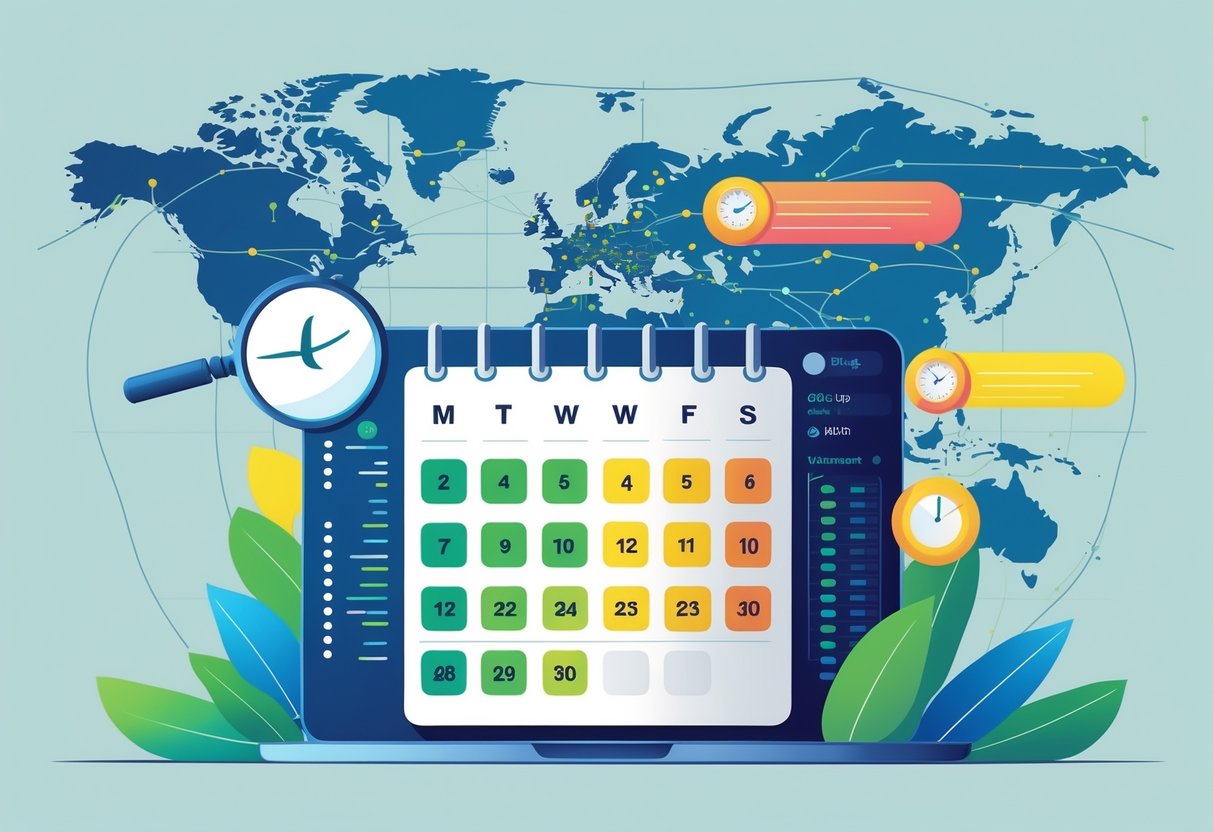
Comparing Low-Cost Carriers
Budget airlines like Southwest, JetBlue, Spirit, and Ryanair often provide some of the most affordable flight options. However, travelers should evaluate each airline’s specific policies, fees, and services before booking.
Not all low-cost carriers fly to every destination, so route research is important. Use tables and airline comparison tools to weigh total travel costs.
Focus on elements like base fare, included amenities, seat selection, and on-board services. While fares are often lower than legacy airlines, amenities such as Wi-Fi, boarding priority, or extra legroom may come at an additional charge.
Comparing these factors side by side helps travelers determine actual value beyond just the advertised price. For more on comparing airline deals, see flight booking tricks and hacks.
Being Aware of Baggage Fees
Budget airlines usually keep base fares low by charging extra for checked and even carry-on luggage. These baggage fees can range widely and sometimes make what looked like a cheap flight more expensive than alternatives.
Always review an airline’s baggage policy before booking. Many low-cost carriers charge per bag, per flight segment, and sometimes even for larger carry-on bags.
It’s important to calculate the full cost of travel, including fees for both checked and cabin baggage. Compare these fees with competing airlines to avoid unexpected charges at check-in or the gate.
For details about baggage fees and other cost-saving strategies, refer to this guide on unlocking savings when booking flights.
Travelers can use a simple checklist before booking:
- Check baggage policies.
- Add up fees for both directions.
- Compare with full-service airlines.
Harnessing Flight Deals, Mistake Fares, and Last-Minute Offers
Finding substantial savings on airfare often comes down to timing, flexibility, and using the right tools. By combining knowledge of how airlines price tickets with proven search strategies, travelers can secure the best flight deals and rare mistake fares.
Spotting Flight Deals and Mistake Fares
Airlines occasionally release unintentionally low ticket prices, known as mistake fares, which can result from data entry errors, glitches, or currency conversion issues. These discounted rates are typically short-lived, so acting quickly is essential.
To increase the chances of spotting these deals, travelers can set up alerts with flight deal websites such as Secret Flying or subscribe to services like Going, which specialize in finding error fares and exceptional airfare discounts.
Tools like Google Flights, Skyscanner, and Hopper allow flexible searches by date and destination, helping users identify the cheapest available fares. Frequent searches and using incognito browser windows can sometimes reveal unpublished deals.
It’s also helpful to be flexible with departure airports and travel dates, as minor adjustments can reveal dramatic price drops. Many seasoned travelers also follow dedicated forums and subreddits, such as the cheapflights section on Reddit, to monitor new opportunities as they appear.
Making the Most of Last-Minute Deals
When plans are flexible, last-minute flight deals can yield significant savings, particularly on routes with unsold seats or sudden demand changes. Airlines often discount remaining inventory in the days leading up to departure, hoping to fill planes rather than fly empty seats.
Travelers can use specialized tools like Hopper or AirHint, which predict price drops and highlight last-minute offers, making it easier to identify opportunities. Signing up for airline newsletters and following them on social media can also lead to exclusive, time-sensitive discounts.
For the best deals, travelers should consider flying midweek, avoiding peak travel periods, and being open to nearby airports or alternate routes. Last-minute deal hunters benefit from quickly comparing prices across multiple platforms, ensuring that newly released offers are not missed.
Leveraging Tools, Apps, and Alerts for Best Results
Finding the lowest airfare requires more than luck. With the right digital strategies and travel technology, travelers can track price drops, access mobile-exclusive hotel deals, and stay updated on changing rates for any travel plan.
Email Updates and Mobile Alerts
Airfare deals often appear with little warning and last only a short time. Email updates from major travel sites and airlines deliver these offers directly to inboxes, including last-minute fare alerts, price drops, and mobile-exclusive hotel discounts.
Subscribing to multiple lists provides broader coverage of deals. Mobile alerts are even faster.
Apps from platforms like Google Flights or airline companies can push instant notifications about sudden fare changes. This real-time delivery allows travelers to respond quickly and secure deals before prices bounce back.
Users can customize notification preferences for specific dates, routes, or even cabin classes.
Travel Apps for Booking
Travel apps play a vital role in making the booking process efficient and flexible. Major travel services and airline carriers have dedicated apps offering features like flexible date search, multi-city planning, and calendar view comparisons.
Some apps aggregate prices from various sources for one-stop comparison. Additional benefits include travel plan management, fare prediction features, and mobile-exclusive hotel rates not found on desktop platforms.
Travelers using apps from companies like Skyscanner, Hopper, and Kayak gain the advantage of swift rebooking, personalized recommendations, and access to limited-time promotions.
Setting Up Automated Tracking
Automated tracking tools keep travelers informed about price trends, reducing the need for constant manual checks. Features such as fare alerts and automated monitoring can be set up on platforms including Google Flights, Going, and airline websites.
These tools notify users when prices match their budget or drop unexpectedly. Customizable tracking filters by destination, date range, or preferred airline streamline the search process.
Some tools, like those described in this guide to flight price alerts, offer detailed instructions for creating personalized alerts. Automated tracking is especially useful for international routes, where monitoring prices 3-6 months in advance can reveal the most favorable booking opportunities.



